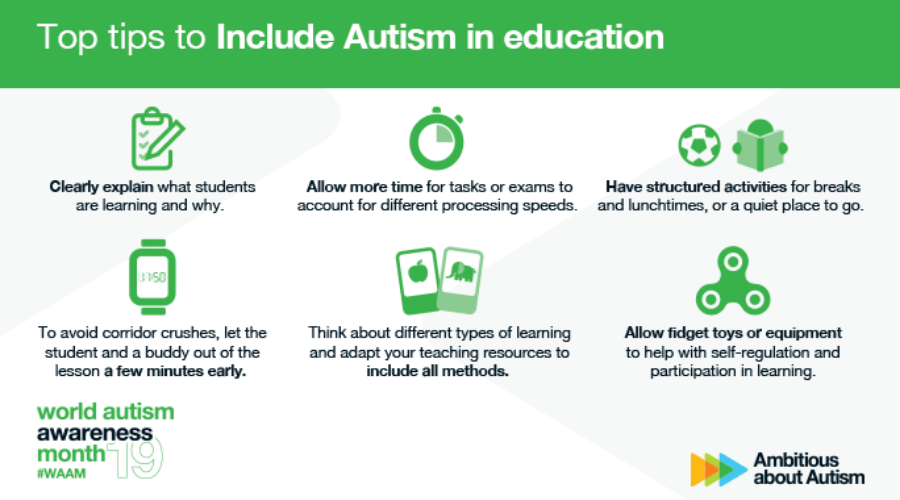Surviving school with autism
Going to school can be a scary experience for anyone, not just an autistic young person. But for many autistic pupils it seems the chips are stacked unfairly against them.
According to Ambitious about Autism research exclusions of pupils with autism have rocketed by almost 60% in English schools in the last few years.
Pupils with autism face extra challenges at school. Sensory issues such as bright lights and loud noises plague them everyday and outside the classroom they are in fear of bullying and other sensory issues. Getting to and from class is also a struggle as so many other pupils rush at once and that can trigger a sensory meltdown. All this makes learning much more difficult.
But there are simple changes that teaching staff can make in the classroom that will make a world of difference to reducing these types of problems for autistic pupils.
Timetables
Timetables are essential in schools and detail what we need to do for the coming days. Most timetables are written down with no clear pictures which make it very difficult for some people with autism. The best way around this is to create a visual timetable with bold, clear simple writing and clear colourful pictures, possibly with it laminated so it does not get damaged. This will make it much easier for pupils to follow the school day and know what to pack in their bags.
Buddy systems
Lots of autistic young people can experience loneliness in school – but having a buddy system can really change this! Having someone your own age who not only understands how you are feeling, but also likes you, makes a real difference. Buddies can hang around with each other outside or if the person does not like to be outside in play/break or lunchtime they can do activities (it doesn’t have to be homework!)
Class rushes
When classes are over, there is often a huge rush to get to the next class by pupils who fear of being late - and possibly getting told off for it. For autistic people this can be a nightmare, as the rushing and the noise can create a lot of anxiety. A good tip is to let autistic pupils out at least five to ten minutes early to avoid the rush. When they do get to class, it is also a good idea to have toys and equipment handy to quell the extra energy that they might have.
I hope these tips help increase support for autistic young people – and stop them falling through the cracks of the education system.
About the author
Solmaz is Ambitious about Autism’s Marketing and Communications Intern. She loves writing, and also has interests in music, technology and beauty products.











